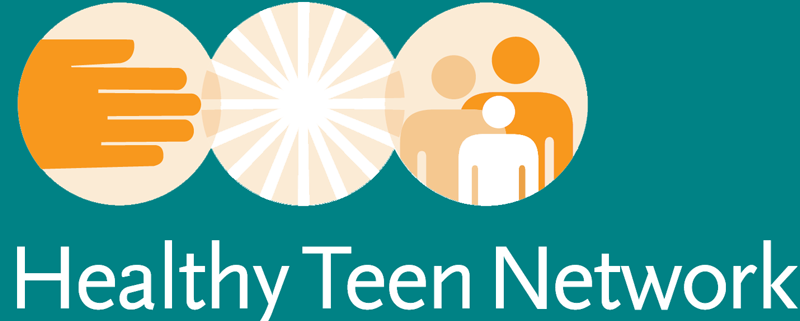It can become overwhelming to think about everything it takes to integrate evidence-based approaches into program and service delivery. Using a framework to integrate these evidence-based approaches, step-by-step, can make this process easier, whether you are designing new, innovative programs or services; implementing evidence-based interventions/programs or services; or adapting existing programs and services.
There are many implementation frameworks out there. Healthy Teen Network most often uses Getting to Outcomes® (GTO) as a framework for integrating evidence-based approaches into providing programs, supports, and strategies to promote the health and well-being of youth and young adults. Another example of a framework is the CHAMPSS Model
Researchers at RAND and the University of South Carolina co-developed GTO initially to address substance abuse prevention. Subsequently, the model has been applied to a range of areas, such as teen pregnancy (Ten Steps to Promoting Science-Based Approaches [PSBA] to Teen Pregnancy Prevention Using GTO) and youth development (GTO with Developmental Assets). Research has demonstrated that agencies that use GTO are better able to carry out their services than those who do not. It is a framework that transcends a particular field, making it an ideal systematic framework for program implementation.
Healthy Teen Network introduced Centers for Disease Control and Prevention, Division of Reproductive Health (CDC DRH) Project Officers to GTO and played a catalytic role in persuading DRH to adopt GTO as its teen pregnancy prevention program implementation science framework. GTO offered a value-added component to integrate evidence-based approaches, improve quality, and strengthen capacity of all grantees and their local partners.
Whether you’re using GTO or another framework, you’ll probably find many similarities. GTO isn’t truly something new…you’re probably already doing many of the steps…rather, GTO is one example of a framework that provides an organized, clear, and systematic approach for developing, planning, implementing, evaluating, and sustaining our work.
Getting to Outcomes® (GTO)
Getting to Outcomes, or GTO, is a framework that takes the details of selecting, implementing, and evaluating a program and lays it out in 10 steps. It may seem like a lot at first, but most organizations already do most of these steps. GTO is an easy to follow process that helps make sure you cover all of your bases, so you can demonstrate your success while planning for sustainability. There are 10 steps, but because GTO is a circular process to support continuous quality improvement and sustainability, you can enter the process where it makes the most sense for you:
Check out this helpful infographic, developed by RAND, on the 10 steps of GTO, proven to lead to better programs.
The GTO process uses widely held evidence-based approaches, or best practices, and was originally developed by Abraham Wandersman, Matthew Chinman, Pamela Imm, and Shakeh Kaftarian, and has since been used successfully in a number of public health areas.
Benefits
The GTO framework helps you to select, implement, and evaluate your evidence based or innovative program so it can be sustainable.
Resources
- Healthy Teen Network Center for Evidence & Innovation
- Healthy Teen Network Elearning Module: Stay on Track Using Getting to Outcomes
- Healthy Teen Network, What’s In Your Toolbox? GTO Webinar Series
- RAND, Getting to Outcomes
- Getting to Outcomes Guide for Teen Pregnancy Prevention (RAND): Chinman, M., Acosta, J., Ebener, P., Sigel, C., and Keith, J. (2016). Getting to Outcomes guide for teen pregnancy prevention. Santa Monica, CA: RAND Corporation.
- Chinman, M., Acosta, J., Ebener, P., Malone, P., & Slaughter, M. (2018). A cluster randomized trial of Getting to Outcomes’ impact on sexual health outcomes in community-based settings. Prevention Science (2018) 19: 437. https://doi.org/10.1007/s11121-017-0845-6
- Chinman, M., Acosta, J., Ebener, P., Malone, P., and Slaughter, M. (2016). Can implementation support help community-based settings better deliver evidence-based sexual health promotion programs? A randomized trial of Getting To Outcomes®. Implementation Science, 11:78. doi: 10.1186/s13012-016-0446-y or https://implementationscience.biomedcentral.com/articles/10.1186/s13012-…
- Chinman, M., S. Hunter, P. Ebener, S. Paddock, L. Stillman, P. Imm, and A. Wandersman. (2008). The Getting To Outcomes Demonstration and Evaluation: An Illustration of the Prevention Support System. American Journal of Community Psychology, 41, pp. 206-224.
- RAND. (n.d.). Getting to Outcomes® (GTO): 10 Proven Steps to Better Programs. Retrieved January 6, 2016, from http://www.rand.org/health/projects/getting-to-outcomes.html
- Wandersman, A., Imam, P., Chinman, M., & Kaftarian, S. (2000). Getting to Outcomes: A results-based approach to accountability. Evaluation and Program Planning, 23(3), 389-395.
- Lesesne, C., et al. (2008) Promoting Science-based approaches to teen pregnancy prevention. American Journal of Community Psychology. 41(3–4).
- Fisher, D., Imm, P., Chinman, M., Wandersman, A. (2006). Getting to Outcomes with Developmental Assets: Ten steps to measuring success in youth programs and communities. Minneapolis, MN: Search Institute Press.
- White, C., Lesesne, C., Lewis, K., Moore, C., Fisher, D., Green, D., and Wandersman, A. (2008). Little PSBA-GTO: 10 steps to Promoting Science-Based Approaches (PSBA) to teen pregnancy prevention using Getting to Outcomes (GTO). Atlanta: Centers for Disease Control and Prevention.

